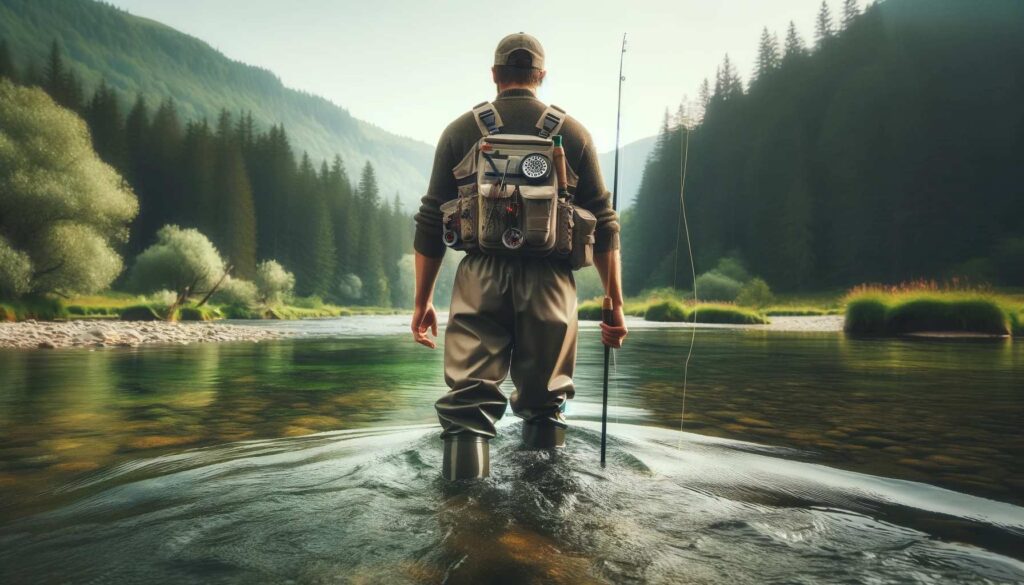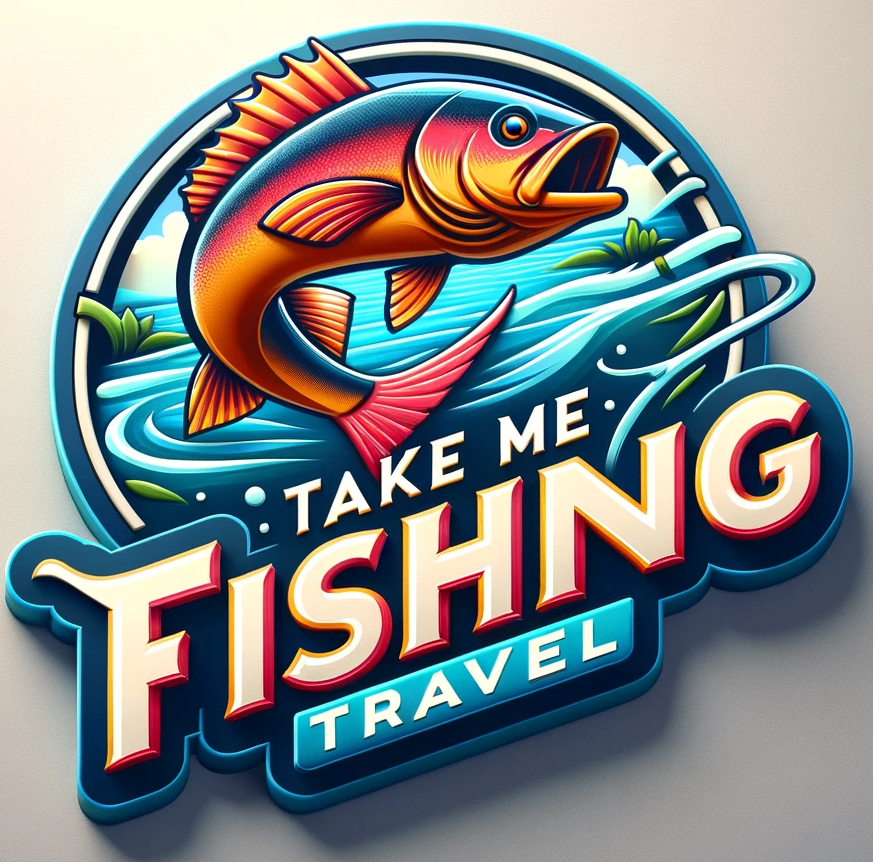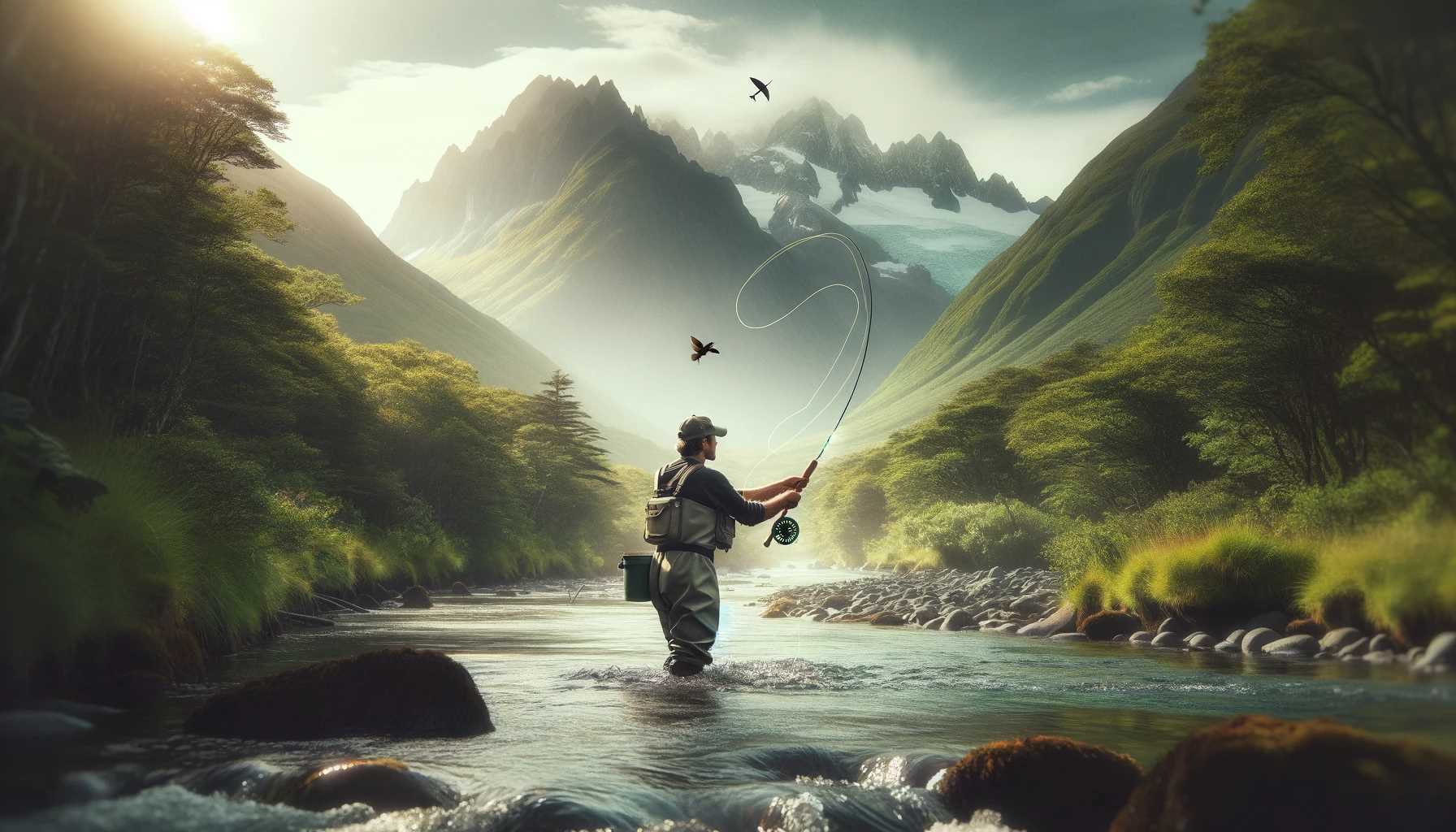This post contains affiliate links.
The Essentials for a Successful Experience
Fly fishing, an angling method distinguished by its unique casting techniques and artistic flair, has captivated enthusiasts for centuries. Unlike traditional fishing, fly fishing involves luring fish using artificial ‘flies’ – a skillful blend of art and science. This article will navigate the basics of fly fishing, essential gear, and crucial safety tips for an enriching experience on the streams.
Understanding Fly Fishing
The Art of Casting
Fly fishing’s core lies in its casting techniques. Unlike conventional fishing, where the weight of the lure or sinker carries the line, fly fishing uses a specialized weighted line. The angler must learn to cast this line in a rhythmic motion, allowing the nearly weightless fly to reach its target. This technique, known as ‘false casting,’ is both a skill and an art, requiring practice and patience.
Choosing the Right Location
Freshwater streams and rivers are the typical havens for fly fishing, known for trout and salmon. However, this technique can be applied in various environments, including saltwater. The key is understanding the fish species in your chosen location and adapting your approach accordingly.
Essential Gear for Fly Fishing

Fly Rod and Reel
The fly rod is the fisherman’s primary tool, with lengths varying from 6 to 14 feet. The choice depends on the fishing environment and target species. A matching fly reel complements the rod, designed to hold the fly line and provide smooth, controlled casting.
Fly Line and Backing
The fly line, a crucial component, comes in various weights and densities to match different fishing conditions. A backing line, attached to the reel, provides additional length and strength, crucial for fighting larger fish.
Leaders and Tippets
The leader, a clear, monofilament line, connects the fly line to the fly. It’s tapered to deliver the fly delicately. The tippet, a thinner line tied to the leader’s end, is where the fly is attached. Its lightness and flexibility make the fly’s movement more natural.
Flies
Flies, the lure in fly fishing, are crafted to mimic insects, baitfish, or other prey. They come in various types like dry flies, wet flies, nymphs, and streamers. Choosing the right fly is an art in itself, often based on the specific feeding patterns of the target fish.
Waders and Boots
Waders keep you dry and comfortable while wading into streams. There are chest-high styles for deep waters and waist-high for shallower areas. Wading boots provide stability and traction on slippery surfaces.
Fishing Vest
A vest with multiple pockets is indispensable for keeping gear like extra flies, leaders, and other tools within easy reach.

Safety Tips for Fly Fishing
Understand the Environment
Before venturing out, familiarize yourself with the local weather and water conditions. Sudden changes in weather can affect water levels and currents.
Wading Safety
When wading, use a staff for stability and move slowly to avoid slipping. Always be aware of the river’s depth and current strength.
Dress Appropriately
Wearing layers allows you to adjust to changing temperatures. A hat and sunglasses protect against the sun, while a waterproof jacket can shield you from rain.
Practice Safe Casting
Be aware of your surroundings to avoid hooking trees, or worse, companions. A well-controlled cast not only prevents accidents but also improves your fishing efficiency.
Respect Wildlife and Environment
Practice catch-and-release whenever possible, and handle fish with care. Respect the natural habitat by leaving no trace of your presence.
Conclusion
Fly fishing, an elegant and skillful form of angling, offers a unique communion with nature. By understanding the basics, equipping yourself with the right gear, and adhering to safety guidelines, you can enjoy this serene yet challenging sport. Whether a beginner or an experienced angler, the world of fly fishing awaits, promising both tranquility and adventure in the beauty of the great outdoors.
This post contains affiliate links.

